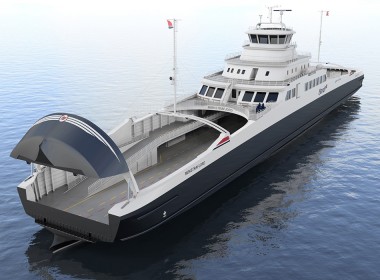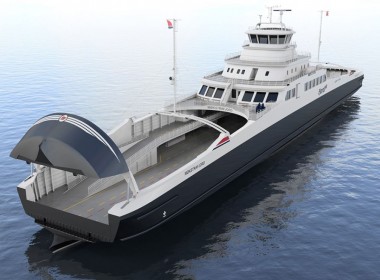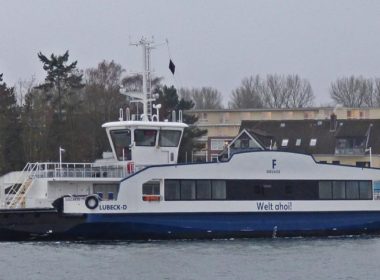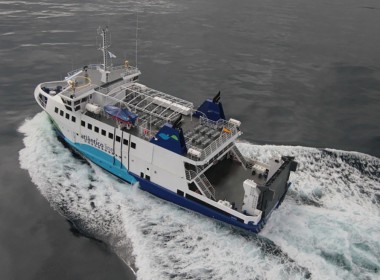VESSEL REVIEW | Salicornia – Double-ended electric ferry to serve Portugal’s western coastal communities

Portuguese shipbuilder Grupo ETE, via subsidiary Navaltagus, recently handed over a new Ro-Pax ferry to the municipal government of the city of Aveiro on Portugal’s western coast.
Designed by local naval architecture firm Vera Navis with the aid of SSI software, the ferry has been named Salicornia after the genus of flowering plant. The vessel’s main area of operations will encompass the stretch between Forte da Barra and São Jacinto in the municipality of Aveiro, with as many as 26 trips scheduled for each day.
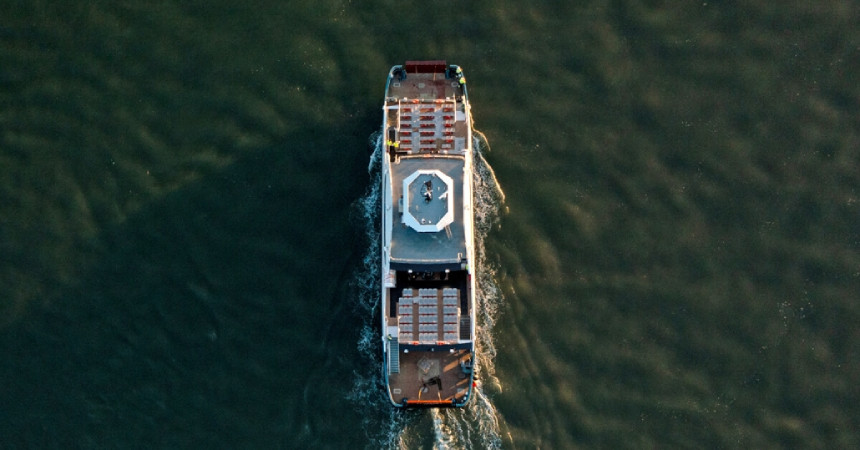
“This vessel has the distinction of being the first electric ferry in operation in the Iberian Peninsula,” Marco Fontes, Commercial Director of Grupo ETE, told Baird Maritime. “However, perhaps its most distinguishing feature is its high degree of manoeuvrability, which is made possible through the installation of two azimuthing thrusters. This arrangement also ensures smoother sailing.”
Capacity and comfort
Salicornia has an LOA of 36.96 metres (121.25 feet), a beam of 9.2 metres (30 feet), a draught of only 1.7 metres (5.5 feet), a depth of three metres (9.8 feet), a gross tonnage of 396, and capacity for 19 vehicles and 260 passengers in addition to four crewmembers. The modern and aerodynamic design ensures improved handling and stability.
“The ferry combines transportation capacity with long endurance,” said Fontes. “This is thanks to a battery pack fitted with a smart power management system that is able to provide an ideal balance between operating autonomy and vessel power.”
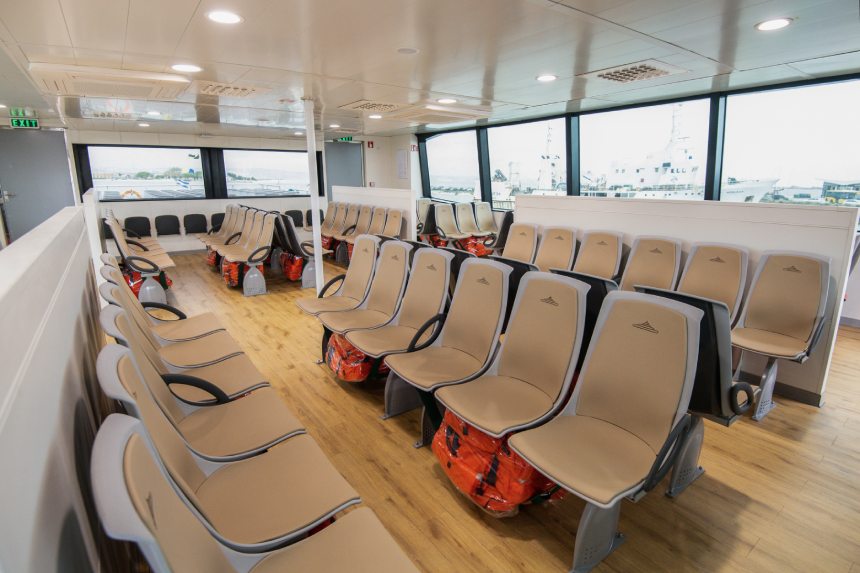
He added that the vessel needed to comply with the strict safety and quality standards in effect in Europe as well as Bureau Veritas class rules, all while providing an improved quality of service for passengers.
The passenger spaces include fully accessible interior and outer decks as well as lounges and heated solariums. Even the interior spaces provide passengers with full 360-degree views of the outside thanks to the installation of large panoramic windows.
Efficient propulsion and operations
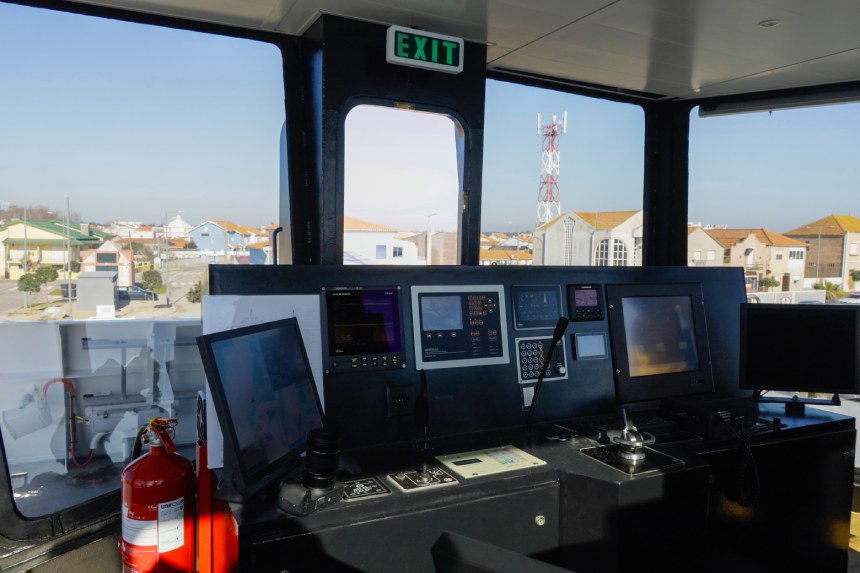
The electric propulsion system consists of two Shift Clean Energy 255kW batteries driving Veth VL-200si azimuthing thrusters. This arrangement enables the ferry to reach a service speed of nine knots and sail up to 200 nautical miles. This also guarantees reduced noise and improved manoeuvrability, though the vessel incorporates a double-ended layout that allows berthing and unberthing to be safely accomplished even with minimal manoeuvring.
“The construction of the ferry provided invaluable lessons that we believe can be applied to future vessel construction projects. Firstly, the experience highlighted the importance of integrating innovative technologies, such as electric propulsion systems to meet evolving environmental standards and sustainability goals. The successful implementation of zero-emission propulsion on Salicornia serves as a blueprint for future builds that aim to reduce carbon footprint and minimise environmental impact.”
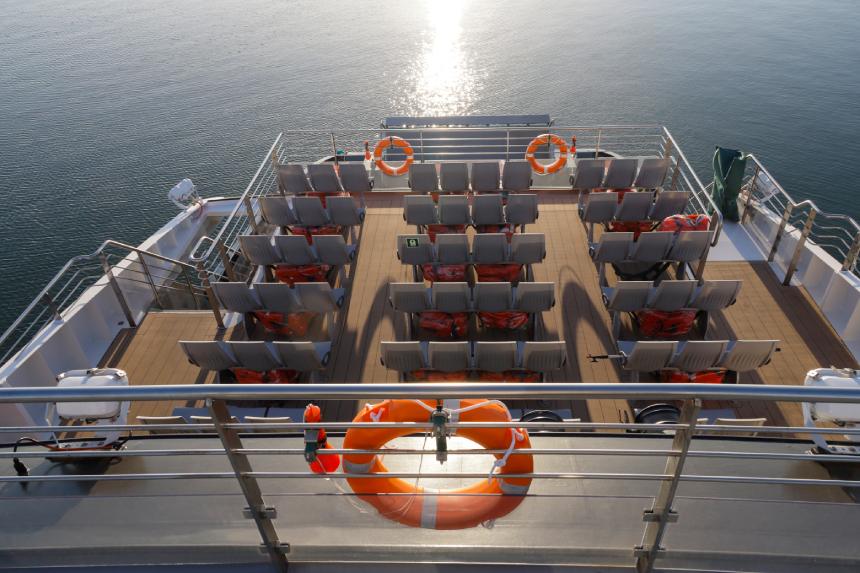
Fontes added that some key learnings include optimising energy efficiency, improving the management of batteries and electrical systems, integrating fast charging technology, and ensuring the durability of materials used in construction. The company also gained experience in dealing with environmental regulations and safety standards specific to electric vessels, which would also be of value for future projects.
“The design emphasised the importance of optimising space and capacity without compromising comfort and functionality,” Fontes told Baird Maritime. “This was evident during the process of balancing the vessel’s dimensions to accommodate the required vehicle and passenger capacities while maintaining manoeuvrability and efficiency.”
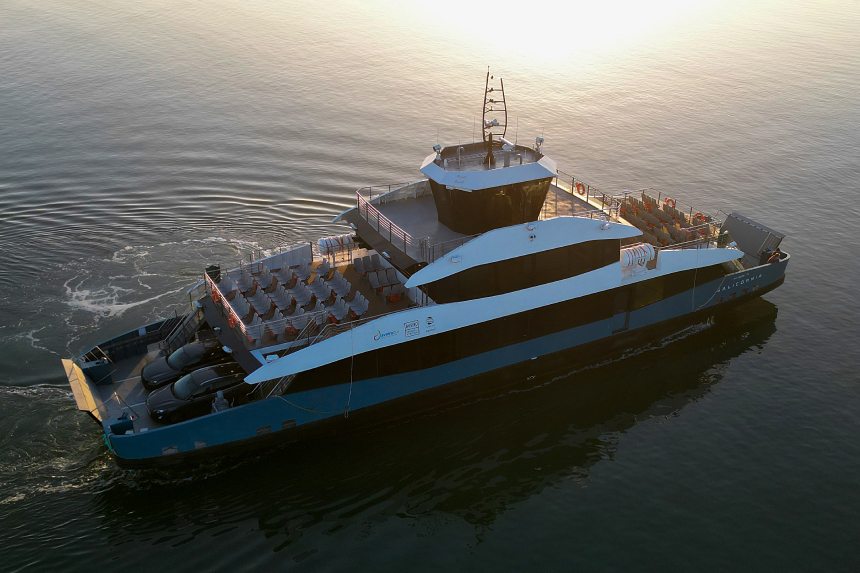
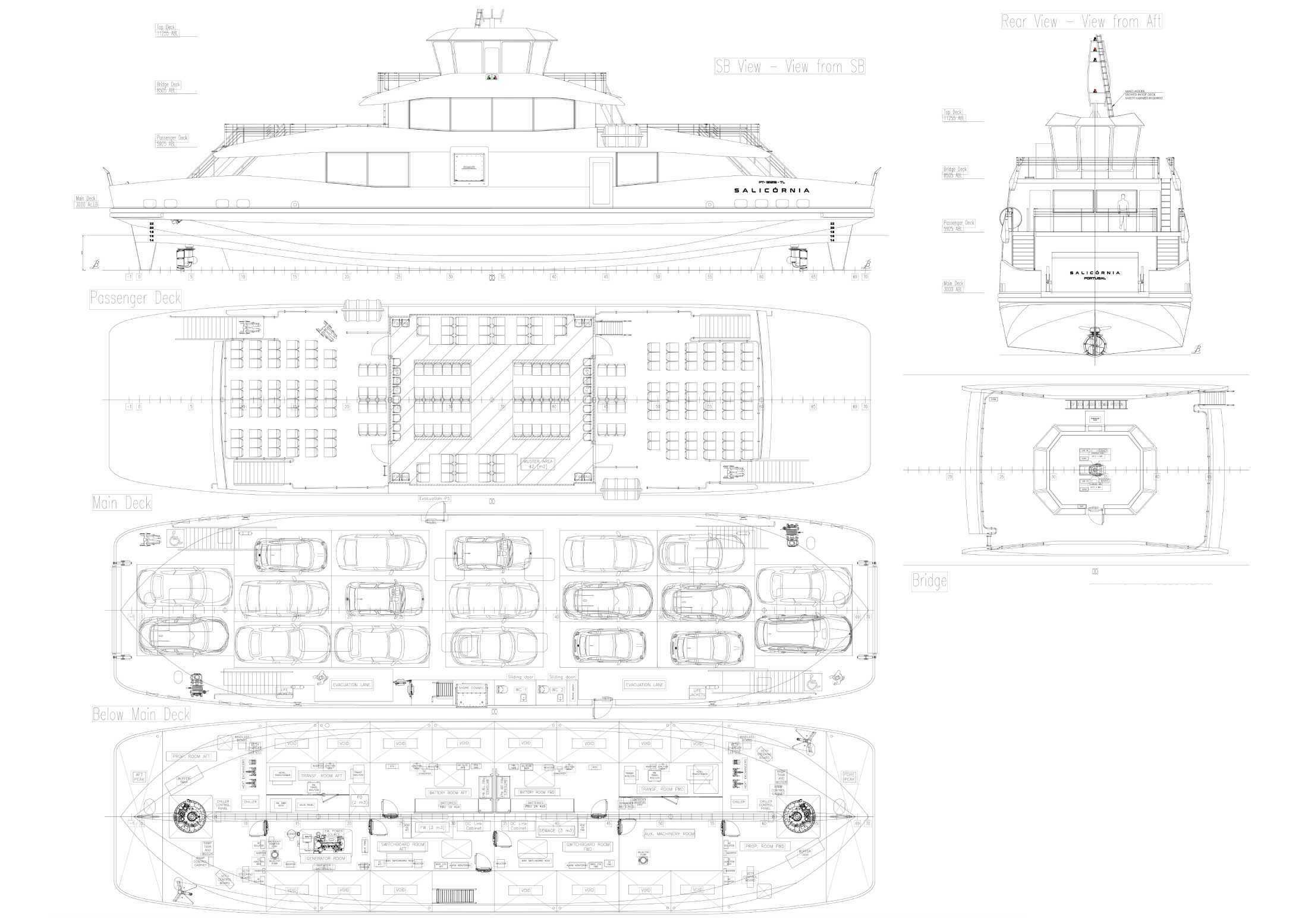
| Salicornia | |
| SPECIFICATIONS | |
| Type of vessel: | Ro-Pax ferry |
| Classification: | BV ✠ HULL • MC 5 IN (0.6) Z | Battery System |
| Flag: | Portugal |
| Owner: | Municipio de Aveiro, Portugal |
| Designer: | Vera Navis Ship Design, Portugal |
| CAD software: | SSI ShipConstructor |
| Builders: | Navaltagus Reparação e Construção Naval, Portugal |
| Length overall: | 36.96 metres (121.25 feet) |
| Beam: | 9.2 metres (30 feet) |
| Draught: | 1.7 metres (5.5 feet) |
| Depth: | 3.0 metres (9.8 feet) |
| Gross tonnage: | 396 |
| Capacity: | 19 vehicles |
| Propulsion: | 2 x Veth VL-200si, each 200 kW |
| Generator: | Volvo Penta D7A, 139 kW at 1,500 rpm |
| Cruising speed: | 9.0 knots |
| Range: | 200 nautical miles |
| Batteries: | 2 x Shift Clean Energy, each 255 kW |
| Radar: | Furuno FAR-1513BB |
| Depth sounder: | Furuno FE-800 |
| Radio: | Furuno FM-8900S VHF |
| GPS: | Furuno RD-33 |
| AIS: | Furuno FA-170 |
| Other electronics: | Furuno DS-85 speed log; Danfoss power management system |
| Interior designer: | Almadesign; Tomas Costa Lima |
| Interior fitout: | 2 x Hisense AC |
| Freshwater capacity: | 3.1 cubic metres |
| Sewage capacity: | 3.1 cubic metres |
| Accommodation: | Lounges; solariums |
| Crew: | 4 |
| Passengers: | 260 |
| Operational area: | Western Portugal |




